| Barony of Bedford | |
|---|---|
| Creation date | ? |
| Created by | William Rufus |
| Peerage | Peerage of England |
| First holder | Paine de Beauchamp |
| Remainder to | Duke of Bedford |
| Barony of Bedford | |
|---|---|
| Creation date | ? |
| Created by | William Rufus |
| Peerage | Peerage of England |
| First holder | Paine de Beauchamp |
| Remainder to | Duke of Bedford |
Extinct? Merged? Merged to Duke of Bedford in 1138, 1366 or 1414
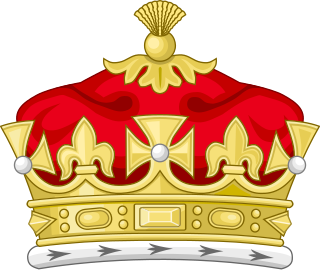
Duke of Clarence was a substantive title created three times in the Peerage of England. The title Duke of Clarence and St Andrews has also been created in the Peerage of Great Britain, and Duke of Clarence and Avondale and Earl of Clarence in the Peerage of the United Kingdom. The titles have traditionally been awarded to junior members of the English and British Royal Family, and all are now extinct.

Duke of Somerset, from the county of Somerset, is a title that has been created five times in the peerage of England. It is particularly associated with two families: the Beauforts, who held the title from the creation of 1448, and the Seymours, from the creation of 1547, in whose name the title is still held. The present dukedom is unique, in that the first holder of the title created it for himself in his capacity of Lord Protector of the Kingdom of England, using a power granted in the will of his nephew King Edward VI.

Earl of Warwick is one of the most prestigious titles in the peerages of the United Kingdom. The title has been created four times in English history, and the name refers to Warwick Castle and the town of Warwick.
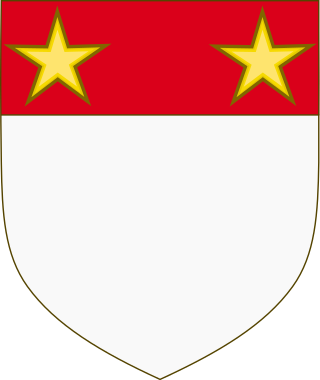
Baron St John of Bletso, in the County of Bedford, is a title in the Peerage of England. It was created in 1582 for Oliver St John.
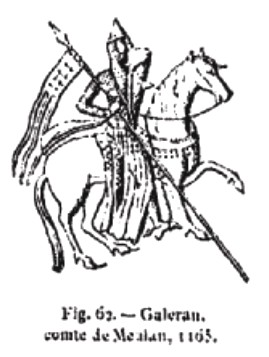
Earl of Worcester is a title that has been created five times in the Peerage of England.
Baron Brooke is a title in the Peerage of England. It was created in 1621 and was absorbed into the Earldom of Warwick in 1759.
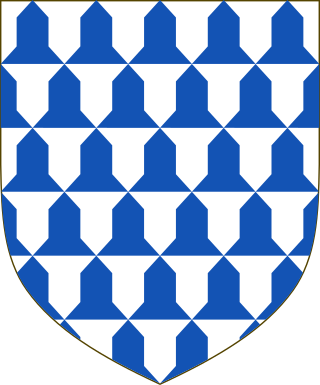
John de Beauchamp, 3rd Baron Beauchamp de Somerset was an English peer.
The title Baron Bergavenny was created several times in the Peerage of England and once in the Peerage of Great Britain, all but the first being baronies created by error. Abergavenny is a market town in South East Wales with a castle established by the Norman lord Hamelin de Balun c. 1087.

The titles Baron Beauchamp and Viscount Beauchamp have been created several times throughout English and British history. There is an extant Viscountcy of Beauchamp, held by the Seymour family, Marquesses of Hertford.
William Mauduit, 8th Earl of Warwick or William Maudit was an English nobleman and participant in the Second Barons' War.

Bedford Castle was a large medieval castle in Bedford, England. Built after 1100 by Henry I, the castle played a prominent part in both the civil war of the Anarchy and the First Barons' War. The castle was significantly extended in stone, although the final plan of the castle remains uncertain. Henry III of England besieged the castle in 1224 following a disagreement with Falkes de Breauté; the siege lasted eight weeks and involved an army of as many as 2,700 soldiers with equipment drawn from across England. After the surrender of the castle, the king ordered its destruction (slighting).

William de Beauchamp, 1st Baron Bergavenny, KG was an English peer.
Hugh de Beaumont, 1st Earl of Bedford was Earl of Bedford from 1137 to 1141. The grant of the earldom was by Stephen of England; this was the first of his numerous creations. Hugh was known as Hugh the Pauper or Hugh the Poor.
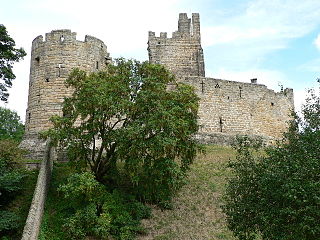
Prudhoe Castle is a ruined medieval English castle situated on the south bank of the River Tyne at Prudhoe, Northumberland, England. It is a Scheduled Ancient Monument and a Grade I listed building.

William de Beauchamp, 9th Earl of Warwick was the eldest of eight children of William de Beauchamp of Elmley and his wife Isabel de Mauduit. He was an English nobleman and soldier, described as a “vigorous and innovative military commander." He was active in the field against the Welsh for many years, and at the end of his life campaigned against the Scots.
William de Beauchamp (c.1186–1260) was a British judge and high sheriff.

The Honour of Richmond was a feudal barony in what is now mainly North Yorkshire, England. The honour was two tiers below Yorkshire, the middle tier being the North Riding.
Newnham Priory was a priory in Newnham, Bedford, Bedfordshire, England.

The feudal barony of Hatch Beauchamp or honour of Hatch Beauchamp was an English feudal barony with its caput at the manor of Hatch Beauchamp in Somerset. The site of the mediaeval manor house, to the immediate south of the ancient parish church of St John the Baptist, is today occupied by Hatch Court, a grade I listed mansion built in about 1755 in the Palladian style.
Hugh de Beauchamp was a Norman who held lands in England after the Norman Conquest.